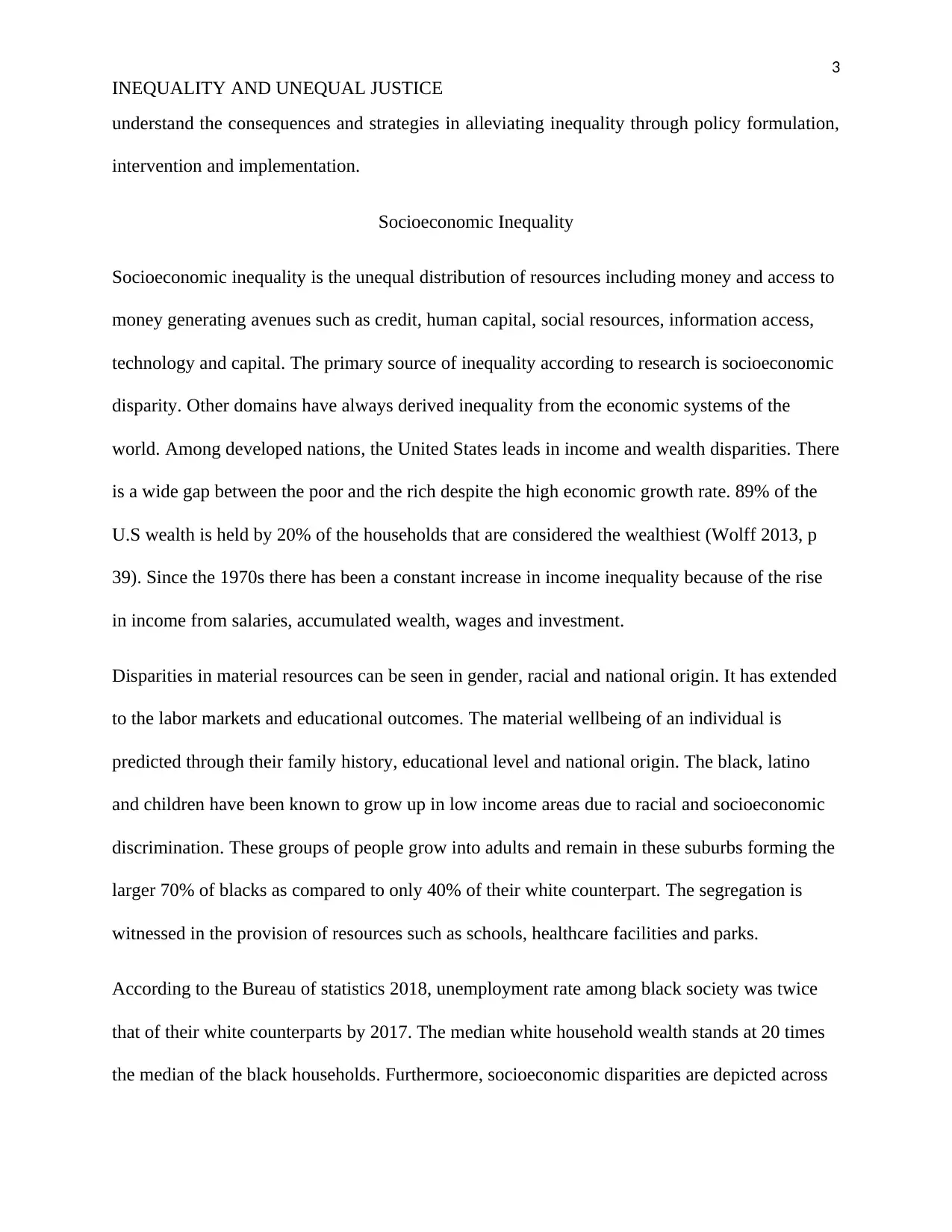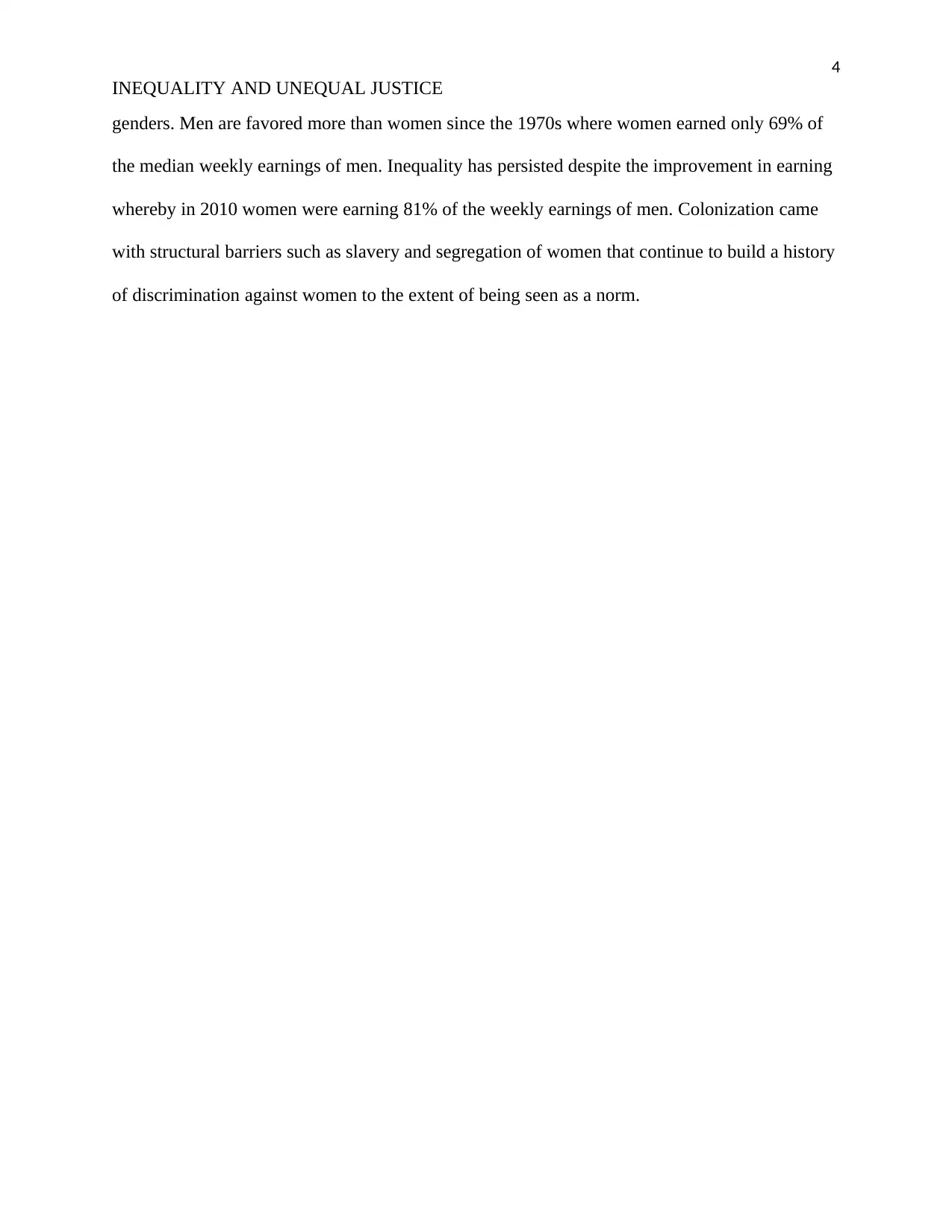Analyzing the Relationship Between Inequality and Unequal Justice
VerifiedAdded on 2022/09/29
|4
|752
|22
Essay
AI Summary
This essay delves into the intricate relationship between inequality and unequal justice, examining how socioeconomic disparities, racialized policing, and the existing wealth gap contribute to societal imbalances. It draws upon diverse disciplines, including economics, sociology, and political science, to define and analyze the causes, patterns, and consequences of social and economic inequality. The essay highlights the impact of socioeconomic factors on various groups, including racial and ethnic minorities, and discusses the historical context, including the legacy of colonization, to understand the evolution of inequality. It further explores how these inequalities manifest in areas such as labor markets, education, and access to resources, ultimately affecting people's lives and welfare. The paper emphasizes the need for policy interventions to alleviate these disparities.
1 out of 4











![[object Object]](/_next/static/media/star-bottom.7253800d.svg)